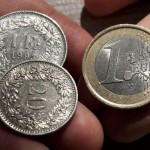Australian dollar continued to advance against its US peer on Tuesday after the Australian elections and another set of upbeat Chinese data.
AUD/USD touched a session high at 0.9288 at 5:31 GMT, the pairs highest point since July. Support was likely to be found at September 4th low, 0.9038, while resistance was to be met at June 26th high, 0.9345.
The Aussie gained positions after earlier today after a report said that Chinese industrial production rose by 10.4% in August on annual basis, outstripping preliminary estimates of a 9.9% increase and after the indicator improved by 9.7% in July.
Additionally, Chinese retail sales climbed 13.4% in August annually, after the 13.2% advance during the preceding month. Experts had anticipated that sales will show a 13.2% increase.
In Australia, a survey by the National Australia Bank (NAB) showed that business confidence improved considerably in August, reaching its highest level since March 2011, supported by the record low benchmark interest rate by the Reserve Bank of Australia (RBA) and the depreciation of the national currency. In August business confidence rose to +6, as it showed a reading of -3 in July. The prospect of political changes, expected by the respondents in the survey, conducted between August 20th and September 7th, also provided support to confidence. This indicator showed improvement in all industrial sectors. The indicator of Australian business climate, however, remained almost unchanged, standing on low levels. It showed -6 in August and -7 in July.
Yesterday it became clear that the number of Australian mortgage approvals rose by 2.4% in August compared to July, exceeding preliminary estimates of a 2.0% increase. Investment lending rose by 2.9% in August.
Also, conservative Tony Abbott will soon take over the Prime Minister post in Australia, after he won a majority at the national elections, conducted on Saturday.
Meanwhile, on Monday the National Bureau of Statistics in China reported that Chinese CPI advanced 0.5% in August, following a 0.1% uptick in July. Economists had expected an increase by 0.4% in August. Chinese PPI improved to -1.6% in August from -2.3% a month ago. Analysts had projected a PPI reading of -1.8% in August. These data points influenced the Aussie, as China is Australia’s largest export partner.
Elsewhere, the Australian dollar was gaining against the euro, as EUR/AUD cross dropped 0.21% on a daily basis to trade at 1.4337 at 6:59 GMT. AUD/NZD pair was trading at 1.1539 at 7:00 GMT, gaining 0.23% for the day.





